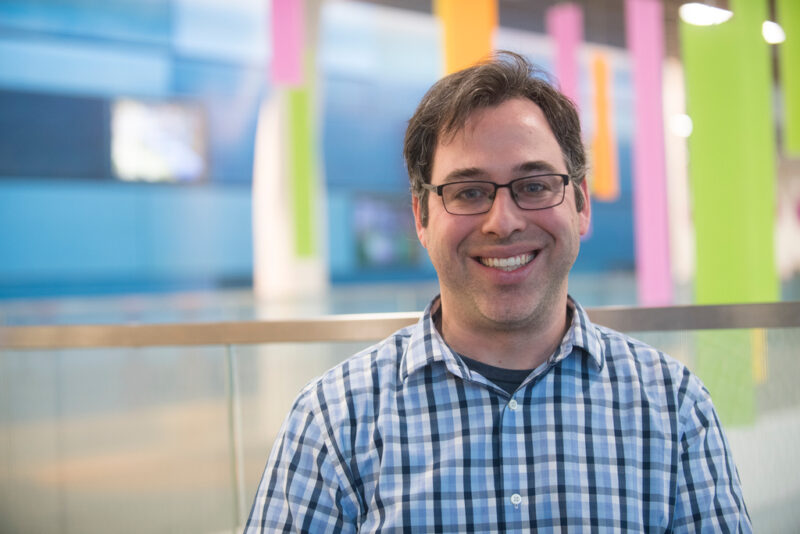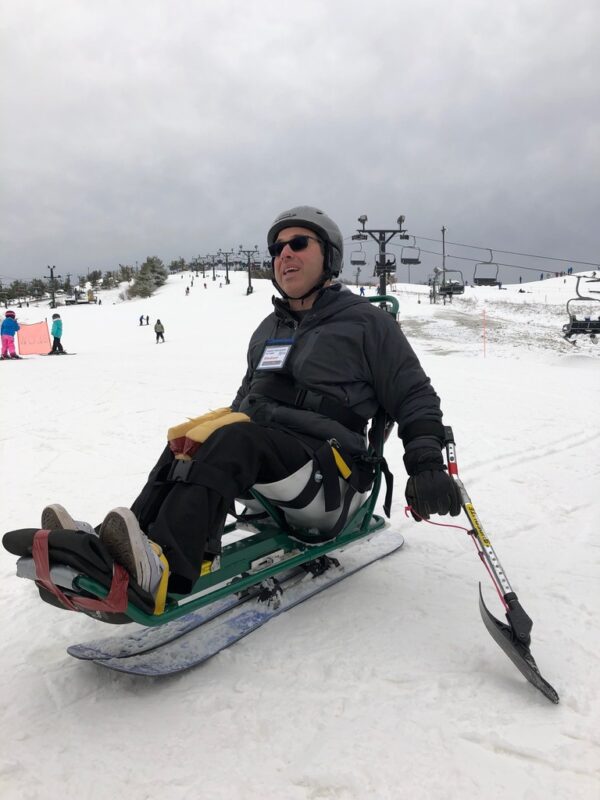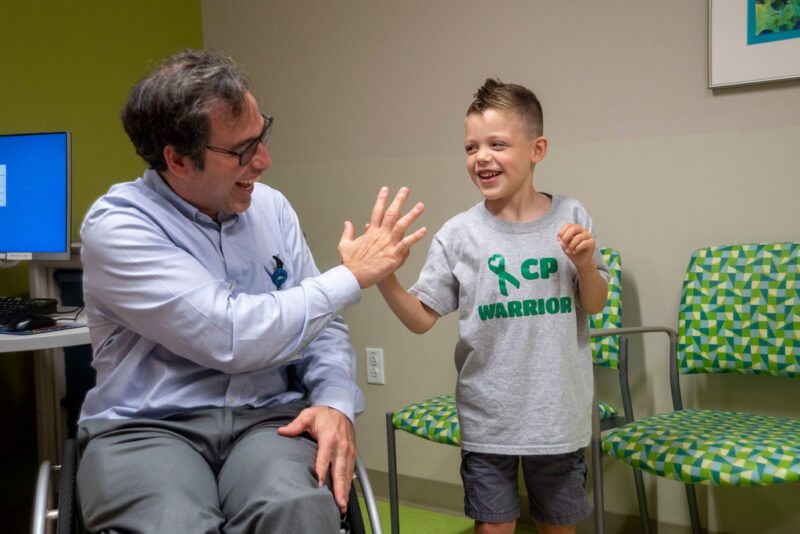
Christopher Raffi Najarian, pediatric physiatrist and director of Akron Children’s Pediatric Spasticity Clinic
How long have you worked at Akron Children’s?
10 years
What’s your role? What do you enjoy most about it?
I am a pediatric physical medicine and rehabilitation physician. I work with children who have mobility, balance, coordination or other neurological or musculoskeletal issues that interfere with daily activity. I work closely with physical, occupational and speech therapists to help patients overcome barriers in everyday life. It’s a blast to work with kids and families to help them achieve their life goals. I often meet patients when they are very young, and it’s very satisfying to see them grow into mature, successful young adults who are able to do the things they want in life.
For those who may be unfamiliar with cerebral palsy (CP), can you please tell me more about that condition and how it impacts your life and your work?
CP is the most common motor disability of childhood. CP results from an injury to or development problem with the brain that causes problems with body movement and posture. For me, because of weakness and coordination problems in my legs, I need mobility help — I wear leg braces and use forearm crutches to walk, and I use a wheelchair for longer distance mobility needs, like for my work here at the hospital.

Dr. Najarian participates in Adaptive Ski Day, a day of skiing designed to empower patients with conditions like cerebral palsy and spina bifida.
What made you decide to work at Akron Children’s?
I was most excited by the opportunity to work with colleagues who were smart and personable, and who I could learn from in developing my practice and my career. The people here seemed like they wanted to be here and enjoyed it. No matter what their position, they were making a positive impact on the health of children and families in northeast Ohio.
As an employee with CP, how does the hospital provide support, resources or accommodations?
I think that the people who work here want to help or assist in any way possible, if there’s a need that I have. I’ve seen more recently, as the hospital has undergone renovations, that the physical environment is more accessible and easier to navigate for wheelchair users — there’s less carpet, bathrooms are more spacious, and overall, there’s been integration of touchless, automatic doors in many places. I think it’s important as we grow and expand to think first about how to make spaces accessible and functional for people of all abilities.

Dr. Najarian is known by his patients for his care and fun attitude during appointments.
As we strive to create an inclusive environment for our employees and patient families, what would you like others to know?
It’s so important to be thinking about, conceptualizing and building environments that prioritize the disabled, not just those with physical limitations, but also visual, hearing, and cognitive-behavioral challenges. Our health is so important! We know that people with disabilities engage less with the health care system to get their health needs met. Part of that has to do with the inherent challenges in navigating a world that isn’t always thoughtfully designed for them.
What does National Disability Employment Month mean to you?
People with disabilities are underrepresented in the workplace, but they have similar value to contribute as those without disabilities. Not only are we as capable as our other colleagues, but we also have a unique perspective from our own lived experience that brings added value to the work we do. I know that many of my patients with CP and their parents and caregivers appreciate having a doctor who also has CP. Often the environment we live in is a barrier to being seen and heard in our communities. If we remove physical barriers to participation and societal barriers to education and employment, we can learn to live with others who are different with a little more empathy and understanding.










